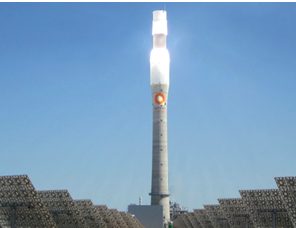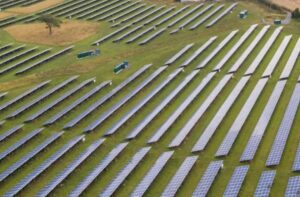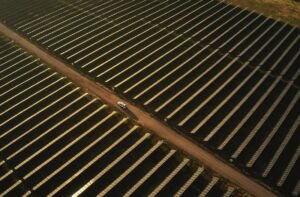The ground-breaking Gemasolar Concentrated Solar Power (CSP) plant with storage near Seville, Spain, has marked its second anniversary with another breakthrough – producing round the clock power for a record breaking 36 consecutive days.
The power plant, owned by Torresol Energy, has been producing energy for two years since its official opening on October 4, 2011. It was the first large scale solar tower power plant to use molten salt, which captures heat during the day so that the plant can still produce energy at night.
Torresol said in a statement marking the anniversary that the plant has exceeded the expected results and has demonstrated the sturdiness of the design. Producing energy 24/7 for 36 consecutive days from solar energy “is something that no other plant has performed so far.”
Molten salt is used in solar power tower systems because it provides a low-cost medium to store thermal energy and operates at temperatures that are compatible with steam turbines as well as being non-toxic and non-flammable.
According to Torresol, the Gemasolar 19.9 MW plant is capable of producing more than 110 GWh per year as well as being able to run for up to 15 hours without any solar feed.
The power plant continuously supplies power to around 27,000 homes, avoiding the release of 30,000 tones of carbon dioxide emissions into the atmosphere. Torresol says the notable increase in the plant’s power efficiency guarantees electrical production for 6,500 hours a year, 1.5 to 3 times more than other renewable energies.
This breakthrough in CSP technology comes just after the announcement of that the 375MW Ivanpah CSP solar power plant has synced its first energy to the local grid.
The Ivanpah plant is set to be the biggest solar thermal plant in the world, although it will not have storage. However, another solar tower plant is being built with molten salt storage.
The 110MW Crescent Dunes project being constructed by Solar Reserve in Nevada will provide a block of electricity between the hours of midday and midnight for the Las Vegas utility.
These developments will come as good news for CSP as recent reports have stated that the market has grown slower than expected – due to the rapid decline of PV prices.









